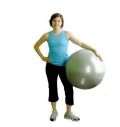|
Ask any trainer and they'll tell you the same thing: Recovery is a highly important aspect
Cramming in more exercises, sets and reps, multiple high-intensity sessions and aimlessly adding more weight in hopes of better results is not the way to achieve them. If there needs to be more of anything, an emphasis needs to be placed on more recovery. The pillars of recovery include proper nutritional practices, positive lifestyle habits and, of course, smart exercise recovery methods. Having a systematic approach in place to optimize your recovery after each training session will provide what the body needs to What is important to understand is that recovery is not a passive process. Meaning, sedentary habits post-workout will not lead to optimal results and recovery. When you hear the word recovery, it's not the couch and a cold brew that should come to mind—it's mindful movement and stretching. If you are truly seeking high performance, great aesthetics and longevity, active recovery measures need to be utilized. The body thrives with movement. Therefore, using active recovery methodologies that promote movement, interstitial fluid circulation, cardiovascular activity and changes in respiratory rate are going to give the body what it needs to recover at its absolute best. During a training session, there is a heightened response of the central nervous system that causes vital metrics such as blood pressure, heart rate and body temperature The four-step recovery strategy outlined below is designed to expedite the recovery process by 1. Low-Effort Cardiovascular WorkCompleting low-intensity cardiovascular work immediately after your training session is meant to start pushing the body into a state of recovery. Activities such as walking, jogging, biking, swimming and other low-impact exercises are good choices to keep stress off the joints and intensities in the correct range. Aim for 10 to 15 minutes of your chosen activity and actively focus on bringing your heart rate back down to normal resting activity levels as you cool down. 2. Foam Rolling and Self-Myofascial Release TechniquesWhat did we do before foam rollers? The truth is, we dealt with a lot of unnecessary soreness and pain. Applying the use of a foam roller or specific self-myofascial release techniques play an important role in normalizing soft tissue tone. Think of using this tool and these methods as removing the "internal parking While foam rolling, prioritize the large muscle groups starting at the most distal end (farthest from the body's center) of the muscle, and roll slowly toward the most proximal end of the same muscle tissue. By directing the flow of interstitial fluid toward the heart, it will allow for a better opportunity to get put into central circulation to get excreted from the body. For maximum benefit, spend two to three minutes rolling over each desired muscle tissue in a smooth, controlled manner. Again, make sure to focus on the big muscle groups such as the hamstrings, glutes, quadriceps, 3. Mobility SequenceThis four-move mobility sequence focuses on the most common areas that need more range of motion amongst the general population: the thoracic spine/cage, hips and anterior chain. Common lifestyle Mobility Drill Sequence: 1. Hip Flexor Stretch with Thoracic Spine Rotation (2 sets, 5 repetitions): In a half-kneeling position, start with a tall posture and sink your hips forward seeking a stretch in the hip flexors, quadriceps, hips and hamstrings. As you are moving forward, reach forward with both hands and place both hands flat on the floor on the inside of the front foot. With the hand closest to the foot, externally rotate reaching toward the ceiling, keep the opposite hand on the floor. Once the end position is achieved, work backwards to the starting position, and repeat. 2. Quadruped T-Spine Rotation (2 sets, 5 repetitions): In a quadruped position, place one hand on the back of the head. Maintaining a neutral spine, internally rotate the upper body, bringing the bent arm toward the opposite arm, then externally rotate the bent arm towards the ceiling to your maximal range of motion. Remember to exhale as you rotate towards the ceiling. Return to your starting position, and repeat. 4. Recovery Breathing PracticeRecovery breathing is an excellent method to further work on returning the body to a more complete rested state. Getting the body into a relaxed position and controlling respiratory rate will help lower heart rate, blood pressure, stress levels and muscular tension To properly use recovery breathing, find the quietest place possible to complete the following practice:
|

.png)



.jpg)


